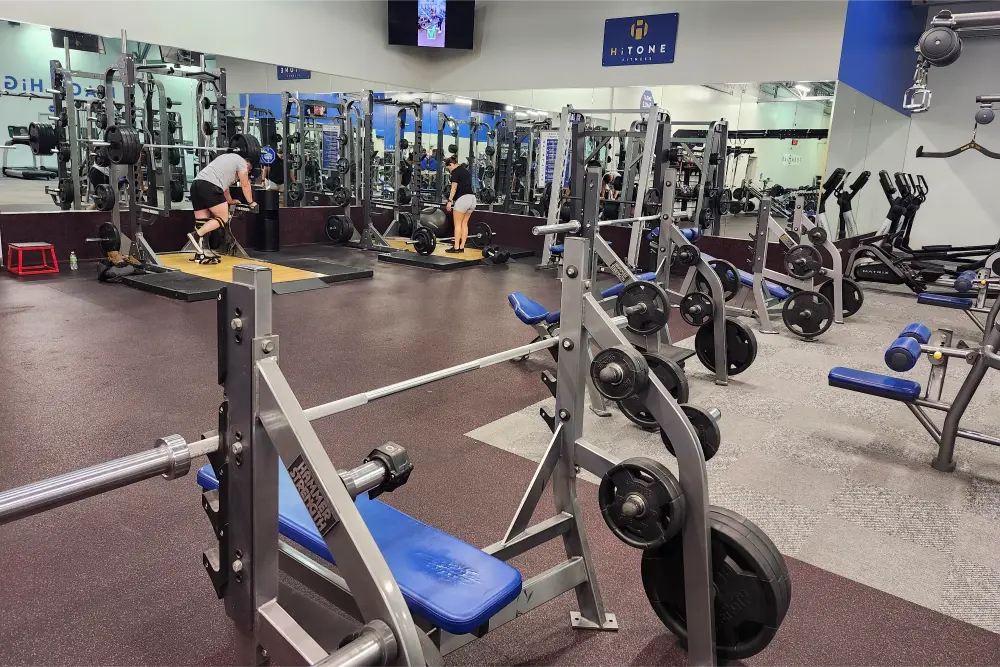Elbow joint pain is a common issue among weightlifters and fitness enthusiasts. It can significantly impact your training routine and overall quality of life. Understanding the causes and implementing effective prevention strategies can help you maintain healthy elbow joints and continue your weightlifting journey without discomfort.
Causes of elbow joint pain during weightlifting
Here are a few reasons why you can experience elbow joint pain in weightlifting:
Overuse and repetitive strain
- Cause: Repeated motions and overloading the elbow joint during exercises like curls or tricep extensions can lead to overuse injuries.
- Effect: This can cause inflammation and strain in the muscles, tendons, and ligaments around the elbow joint.
Improper technique
- Cause: Using incorrect form or technique while lifting weights can put undue stress on the elbow joint.
- Effect: This can lead to imbalances and injuries, resulting in pain and discomfort.
Muscle imbalances
- Cause: Neglecting certain muscle groups or having imbalanced strength in opposing muscle groups can lead to uneven pressure on the elbow joint.
- Effect: This imbalance can cause pain and increase the risk of injury.
Pre-existing conditions
- Cause: Conditions like tennis elbow (lateral epicondylitis), golfer’s elbow (medial epicondylitis), or arthritis can be exacerbated by weight lifting.
- Effect: These conditions can cause pain, stiffness, and reduced range of motion in the elbow joint.
Prevention strategies
Now here are a few things that can help you prevent elbow joint pain:
Proper warm-up
- Strategy: Always begin your workout with a proper warm-up that includes dynamic stretches and light exercises to increase blood flow to the elbow joint.
- Benefit: This prepares the muscles and tendons for the upcoming workload, reducing the risk of injury.
Correct technique
- Strategy: Ensure that you are using the correct form and technique for each exercise, and seek guidance from a qualified trainer if unsure.
- Benefit: Proper technique distributes the load evenly, preventing excessive strain on the elbow joint. If you are not sure if you have the correct form, then consider working with a personal trainer at HiTone Fitness. Our certified trainers will guide you and teach you how to perform every exercise properly.
Lear correct technique for biceps exercises with dumbbells for strong arms.
Gradual progression
- Strategy: Gradually increase the weight and intensity of your workouts rather than making sudden jumps.
- Benefit: This allows your body, including your elbow joint, to adapt to the increased demands safely.
Balanced training
- Strategy: Incorporate exercises that target all muscle groups, including opposing muscle groups, to maintain balance and stability around the elbow joint.
- Benefit: A balanced training program reduces the risk of muscle imbalances and associated elbow pain.
Use of supportive gear
- Strategy: Consider using elbow sleeves or wraps for additional support during heavy lifts or if you have a history of elbow pain.
- Benefit: Supportive gear can provide compression and warmth, helping to stabilize the joint and reduce the risk of injury.
Regular rest and recovery
- Strategy: Incorporate rest days into your training schedule and listen to your body, taking breaks when needed.
- Benefit: Adequate rest allows your body, including your elbow joints, to recover and repair, preventing overuse injuries.
Final thoughts
Elbow joint pain from weight lifting can be a frustrating setback, but understanding its causes and implementing effective prevention strategies can help you maintain healthy joints and continue your fitness journey.
Always prioritize proper form, balanced training, and adequate rest to keep your elbows pain-free and strong. If pain persists, consult a healthcare professional for a proper diagnosis and treatment plan.







